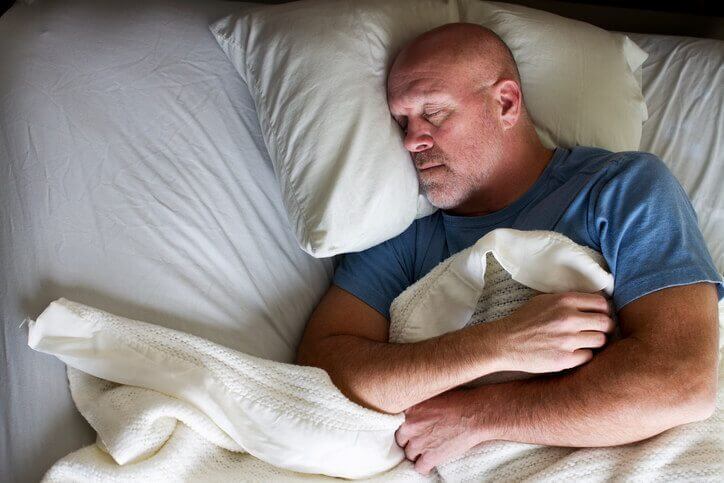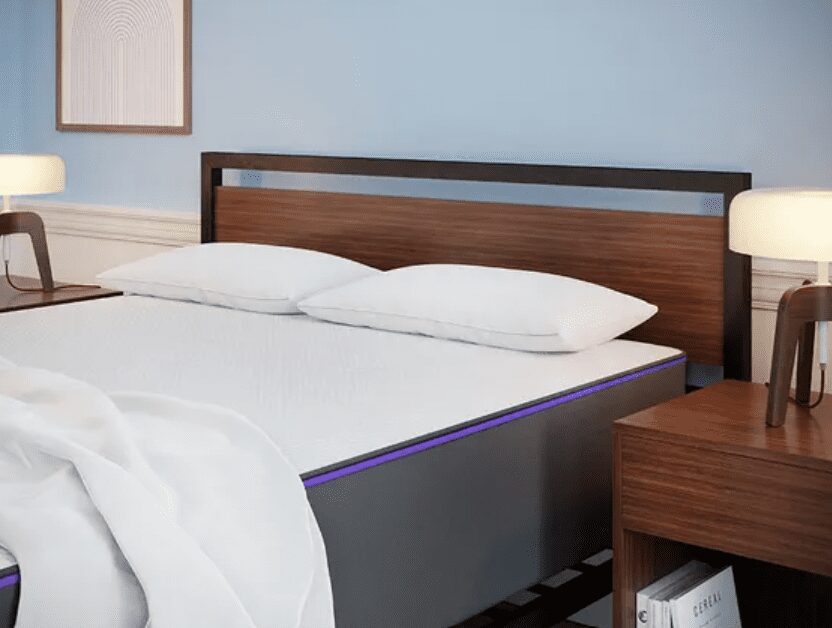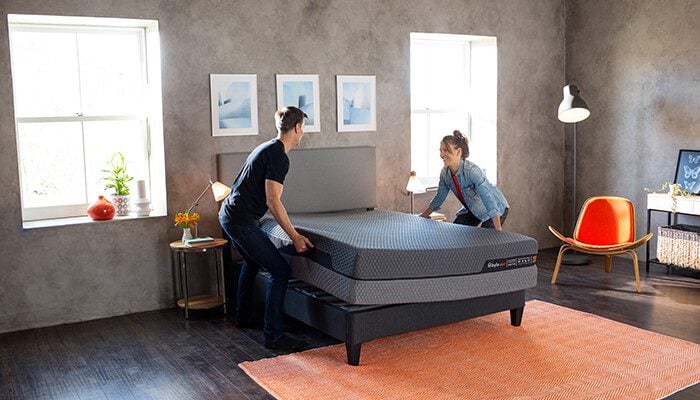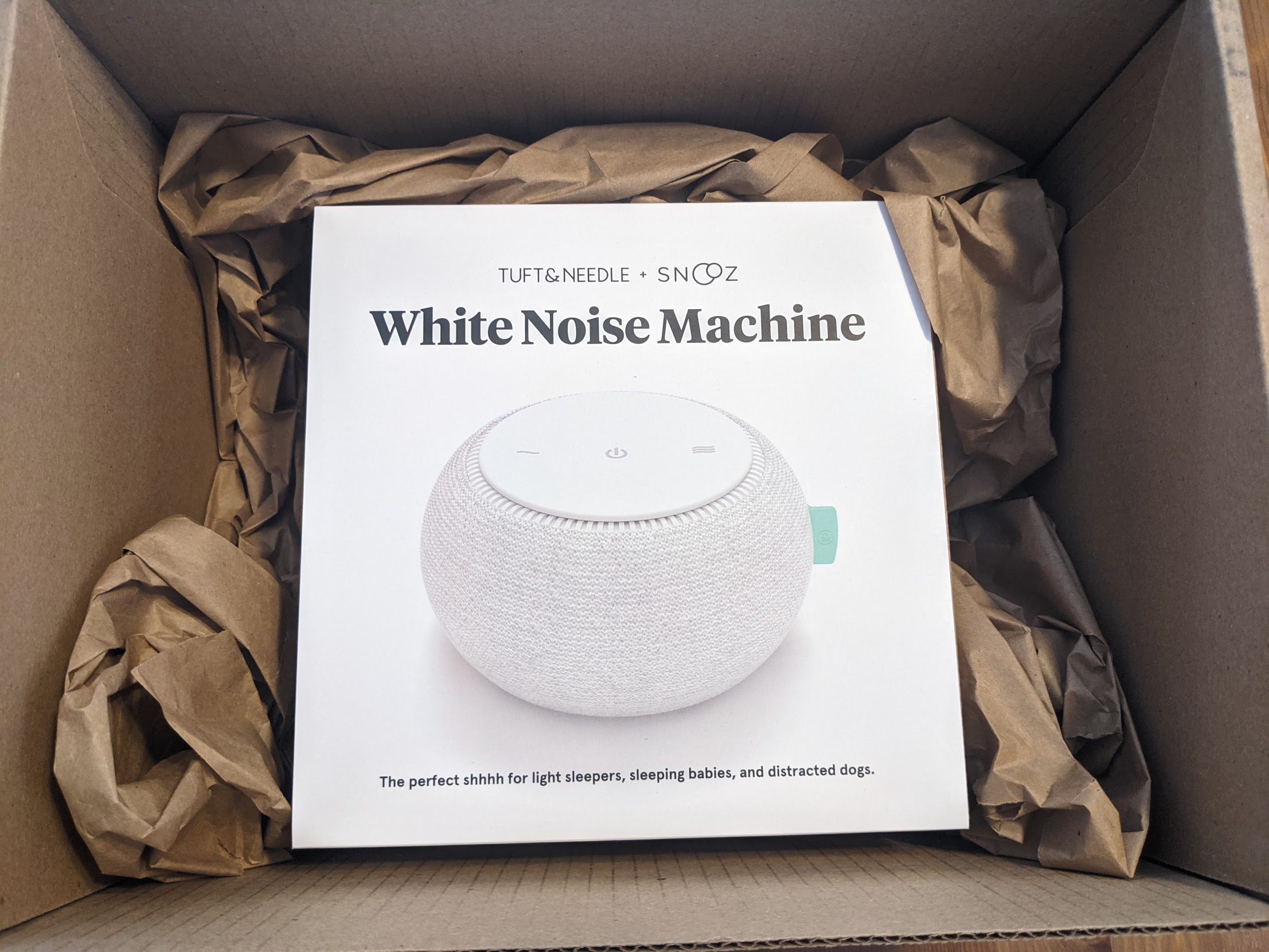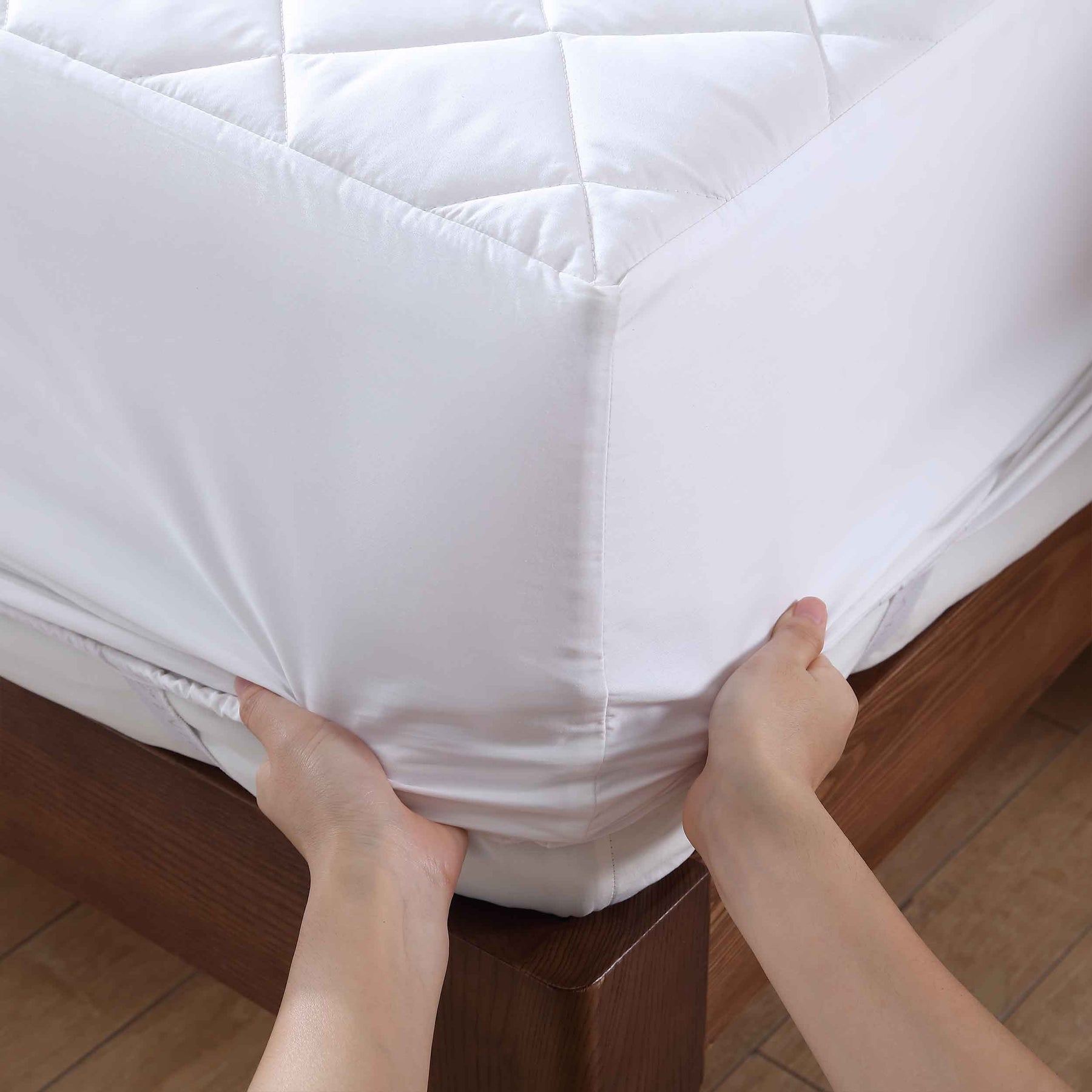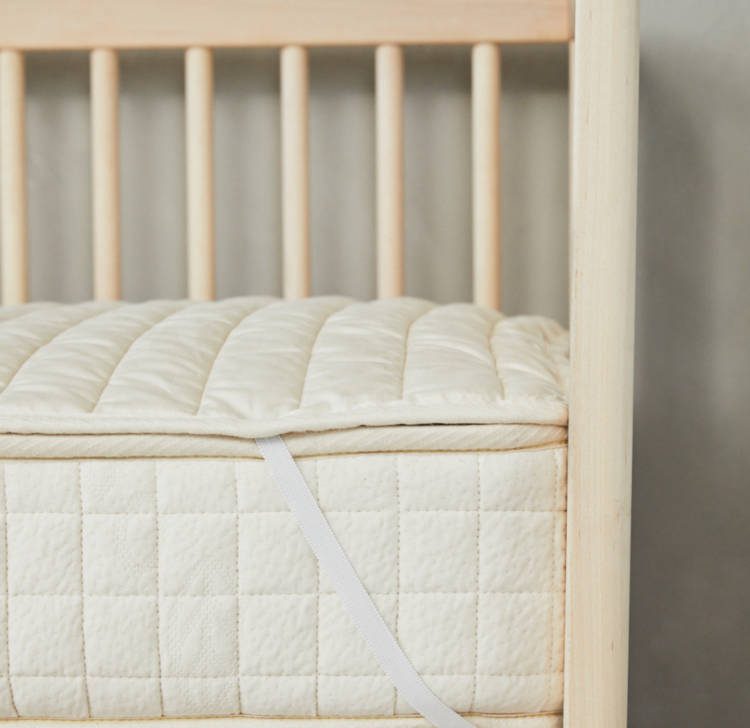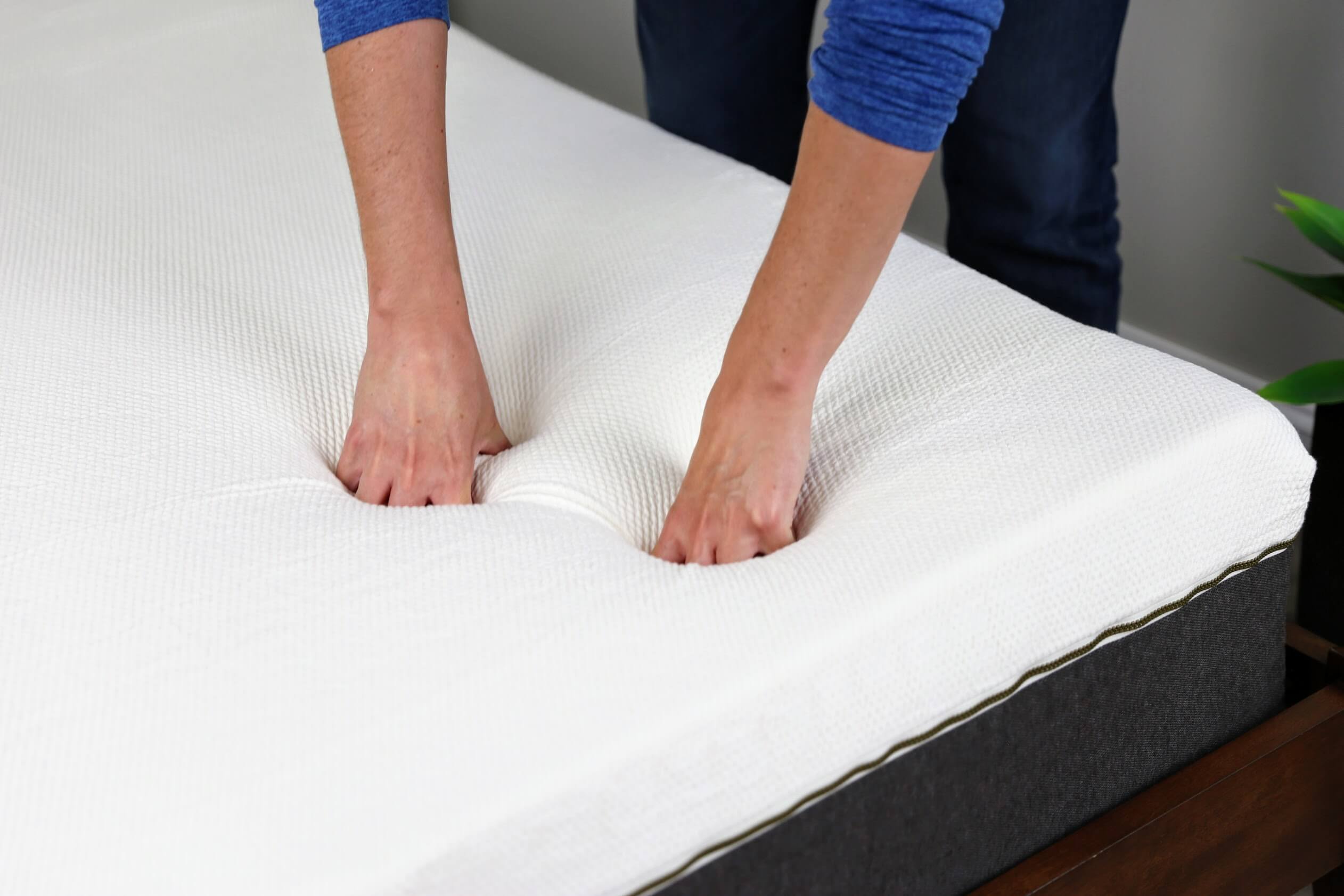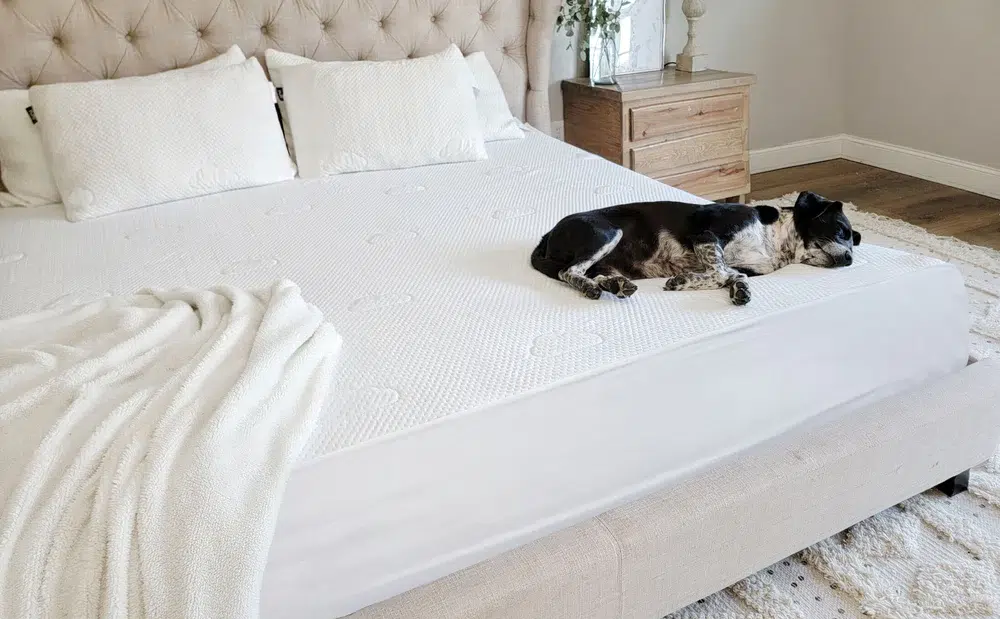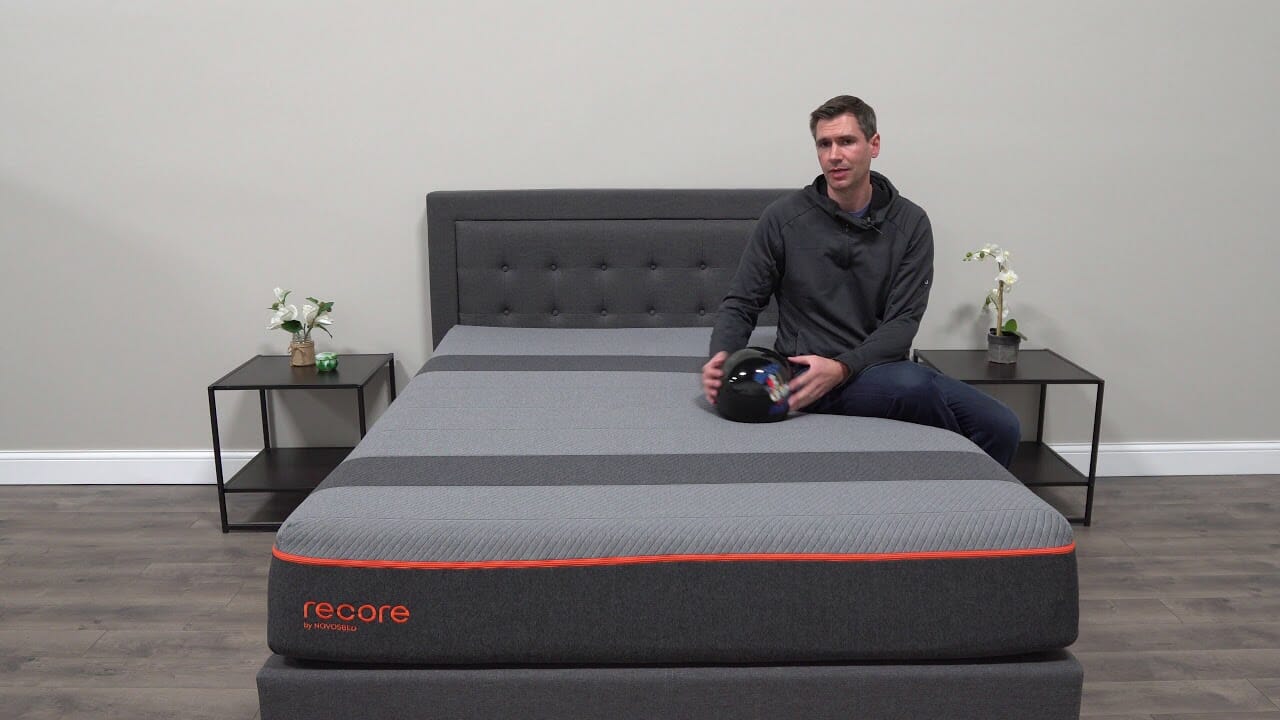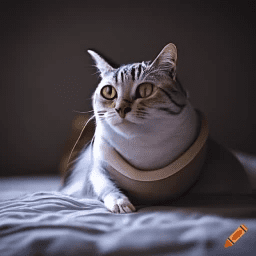Choosing the best Costco mattress depends on your budget, sleeping style, and preferences. Here are some top contenders across different categories:
Best Overall:
- Kirkland Signature Lakeridge: This Stearns & Foster-made mattress offers excellent pressure relief, support, and cooling, thanks to its innerspring core, gel memory foam layer, and cooling cover. It comes with a 10-year warranty and white glove delivery for a truly luxurious experience.
- Kirkland Signature Lakeridge: This Stearns & Foster-made mattress offers excellent pressure relief, support, and cooling, thanks to its innerspring core, gel memory foam layer, and cooling cover. It comes with a 10-year warranty and white glove delivery for a truly luxurious experience.
Best Luxury:
- Beautyrest Salina Silver Hybrid Plush Queen Mattress Only: This hybrid mattress combines innerspring coils with pocketed coils and memory foam for a balance of support, bounce, and pressure relief. The plush comfort layer makes it ideal for side sleepers.Beautyrest Salina Silver Hybrid Plush Queen Mattress Only
- Beautyrest Salina Silver Hybrid Plush Queen Mattress Only: This hybrid mattress combines innerspring coils with pocketed coils and memory foam for a balance of support, bounce, and pressure relief. The plush comfort layer makes it ideal for side sleepers.
Best for Back Sleepers:
- Sealy Posturepedic Plus Mount Auburn 13” Medium King or Cal King Mattress: This mattress features a zoned innerspring system that provides targeted support for the lower back, making it a good choice for back sleepers.
- Sealy Posturepedic Plus Mount Auburn 13” Medium King or Cal King Mattress: This mattress features a zoned innerspring system that provides targeted support for the lower back, making it a good choice for back sleepers.
Best for Side Sleepers:
Sealy Posturepedic Carver
Features:
- Plush comfort layer: Provides ample cradling and pressure relief for side sleepers and those who prefer a softer feel.
- Zoned support: Offers additional support specifically under the lumbar region for proper spinal alignment.
- MoistureProtect™: Helps regulate temperature and keep you cool while you sleep.
- DuraFlex™ edge system: Enhances usable sleep surface and prevents sagging at the edges.
- 10-year warranty: Provides peace of mind about the mattress’s quality and durability.
Customer reviews:
The Sealy Posturepedic Carver Plush has overall positive reviews on Costco’s website, with an average rating of 4.3 out of 5 stars. Many customers praise its comfort, support, and cooling properties. However, some reviewers mention finding it too soft or lacking edge support.
Best Memory Foam:
Tempur-Pedic Supreme 11.5″ Medium Hybrid Mattress from Costco sounds like a luxurious and potentially great option for those seeking a comfortable and supportive sleep experience. Here’s a breakdown of its key features to help you decide:
Features:
- Hybrid construction: Combines pressure-relieving Tempur® material with over 1,000 premium innersprings for comfort and bounce.
- Medium firmness: Suitable for a variety of sleeping positions and preferences.
- Cool-to-the-touch cover: Features high-density cooling yarn for enhanced temperature regulation.
- Pressure relief: Tempur® material conforms to your body shape, reducing pressure points and promoting proper spinal alignment.
- Motion isolation: Minimizes partner disturbance, ensuring a peaceful sleep for both sleepers.
- Durability: Built with high-quality materials for long-lasting comfort and support.
Additional points to consider:
- Price: Tempur-Pedic mattresses are known for their premium price tag, and the Supreme 11.5″ Hybrid is no exception. Be prepared for a significant investment.
- Trial and warranty: Costco offers a 90-day return policy on mattresses, so you can try it out before committing. The mattress also comes with a 10-year warranty from Tempur-Pedic.
- Availability: This mattress is exclusive to Costco and might have limited availability depending on your location and size preference.
Overall:
The Tempur-Pedic Supreme 11.5″ Medium Hybrid Mattress appears to be a high-quality, comfortable, and supportive option for those who prioritize pressure relief, motion isolation, and a cool sleeping experience. However, the price point could be a deterrent for some. Consider your budget, sleep preferences, and trial periods before making a decision.
Best Cooling:
Casper Select 12″ Hybrid Medium-Firm Mattress is a Costco-exclusive mattress that is made with a combination of innerspring coils and foam. It is 12 inches thick and has a medium-firm feel.
The mattress has a four-layer foam construction, including:
- Breathable open-cell foam for airflow and pressure relief
- High-density memory foam for conforming to your body shape
- Zoned transition foam for support and pressure relief
- Durable support foam for a stable base
The mattress also has a hand-sewn cover that is made from a blend of wool and polyester.
The Casper Select 12″ Hybrid Medium-Firm Mattress has received positive reviews from customers, who praise its comfort, support, and cooling ability. However, some customers have found it to be too firm.
Ultimately, the best way to find the perfect Costco mattress is to try them out in person. Costco locations have designated mattress areas where you can relax and test different models. Be sure to consider your sleep preferences, budget, and any physical concerns you may have when making your decision.
Here are some additional tips for choosing a Costco mattress:
- Read online reviews: Get a sense of what other customers think of the mattresses you’re considering.
- Compare prices: Costco mattresses are often competitively priced, but it’s still a good idea to compare prices with other retailers to make sure you’re getting the best deal.
- Consider the return policy: Costco has a generous return policy, so you can always return your mattress if you’re not satisfied.
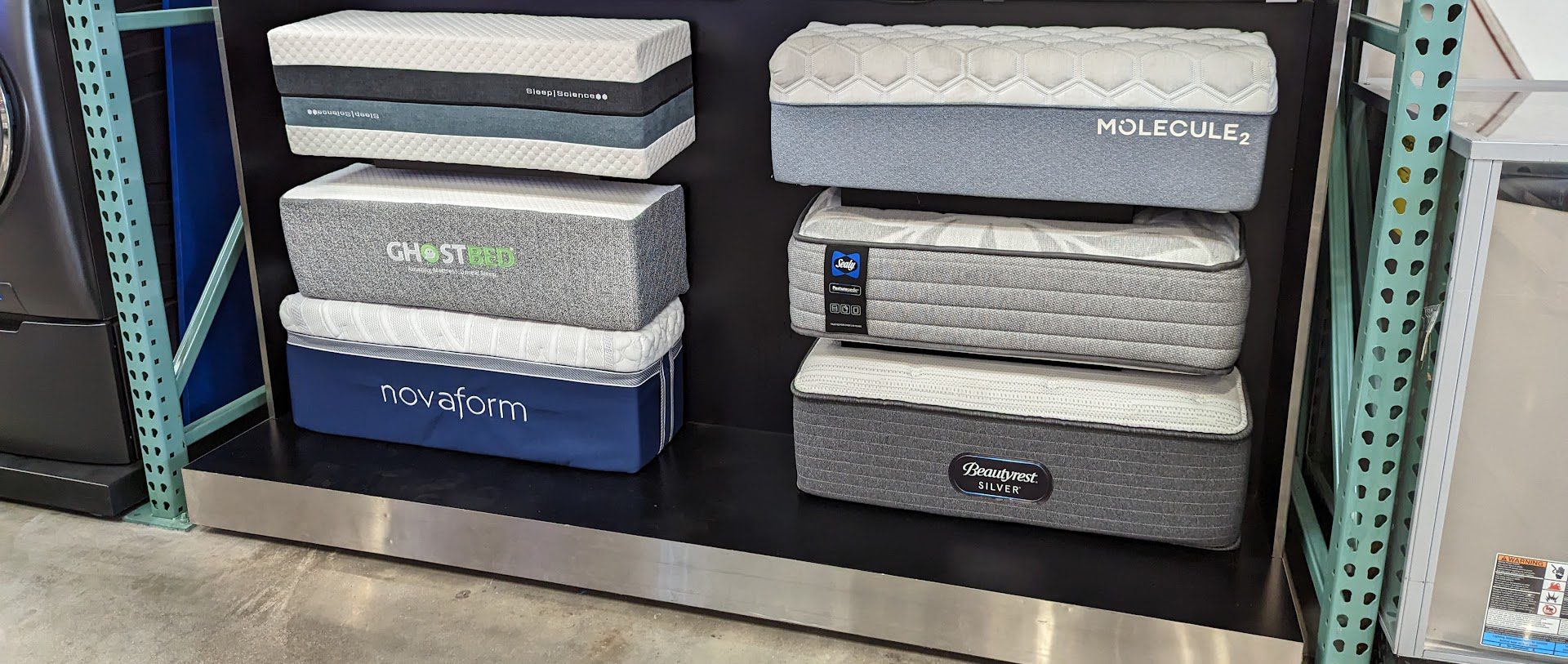
Why are Costco Mattresses So Cheap?
Costco mattresses are often more affordable than those found at other retailers for several reasons:
Bulk purchasing: Costco operates on a warehouse model, which means they buy products in large quantities directly from manufacturers. This allows them to negotiate better prices and pass on the savings to their customers.
Membership fees: Costco is a membership-based retailer, which means customers pay an annual fee to access their products and services. These fees provide Costco with a steady revenue stream, enabling them to offer lower prices on their products, including mattresses.
Limited selection: Costco typically carries a more limited selection of products compared to traditional mattress retailers. By offering fewer options, they can focus on high-quality, popular models and negotiate better deals with manufacturers.
Lower overhead costs: Costco’s warehouse-style stores have lower overhead costs compared to traditional retail stores. They require less expensive fixtures and displays, and the simple, no-frills shopping environment allows Costco to save on expenses, which in turn results in lower prices for customers.
Private label offerings: Costco also sells their own private label mattresses, such as the Kirkland Signature line. These mattresses are manufactured by well-known brands but sold under Costco’s label, often at a lower price than their branded counterparts.
Overall, Costco’s business model allows them to offer quality mattresses at more affordable prices by focusing on bulk purchasing, reducing overhead costs, and leveraging membership fees to provide value to their customers.
How Many Mattresses Does Costco Sell A Year?
Since Costco is a large multinational corporation with a wide range of products, they typically do not release specific sales figures for individual product categories like mattresses.
However, it’s safe to assume that Costco sells a significant number of mattresses each year due to their competitive prices, vast customer base, and reputation for offering quality products.
Costco Mattress Trial and Warranty
Costco is known for having a very generous return policy. They offer a satisfaction guarantee on all their products, including mattresses, which allows customers to return items for any reason within a certain time frame for a full refund.
The specifics of the return policy vary depending on the product, but in general, most items can be returned within 90 days of purchase. Costco also offers a 100% satisfaction guarantee on their Kirkland Signature private label products, which means that if you’re not satisfied with one of their products at any time, you can return it for a full refund or exchange.
This lenient return policy has helped build a reputation for Costco as a company that values customer satisfaction and is willing to stand behind the products they sell. It has also contributed to the company’s success, as many customers feel comfortable making purchases at Costco knowing that they can easily return them if they’re not satisfied.
Costco offers a satisfaction guarantee on their mattresses, which means that you can return the mattress for any reason within the specified trial period for a full refund. The trial period varies depending on the mattress you purchase, but it is typically around 90 days.
In terms of warranty, most Costco mattresses come with a manufacturer’s warranty that covers defects in materials and workmanship. The length of the warranty varies depending on the mattress, but it is typically between 10 and 20 years. If you encounter any issues with your mattress within the warranty period, you can contact the manufacturer directly to make a claim.
It’s important to note that the warranty and trial periods may differ for specific models or brands of mattresses sold at Costco, so it’s always a good idea to read the product information carefully before making a purchase. Additionally, be sure to keep your receipt and any other documentation related to your purchase in case you need to make a warranty claim in the future.
Costco Mattress Delivery and Removal
Costco offers delivery and removal services for their mattresses. The delivery options and fees may vary depending on your location and the specific mattress you purchase, but in general, Costco offers free standard delivery to your doorstep for most of their mattresses.
If you prefer, you can also opt for an upgraded delivery service, such as White Glove Delivery, which includes in-home delivery and setup of your new mattress, as well as removal of your old mattress. This service may incur additional fees.
In terms of mattress removal, Costco offers a service called Mattress Haul-Away, which allows you to have your old mattress removed at the same time your new one is delivered. The cost for this service varies depending on your location and the size of your mattress.
It’s important to note that delivery and removal services may not be available in all areas, so it’s a good idea to check with your local Costco store or their website to confirm the options available in your area.
Costco Mattress Quality
Costco offers a range of mattresses from different brands, and the quality of these mattresses can vary depending on the specific brand and model. However, in general, many of the mattresses sold at Costco are known for their high quality and competitive pricing.
Costco’s private label brand, Kirkland Signature, offers a variety of mattresses that are highly rated by customers for their comfort and durability. These mattresses are often manufactured by well-known brands, but sold under the Kirkland Signature label, which allows Costco to offer them at a lower price than other retailers.
In addition to Kirkland Signature mattresses, Costco also carries mattresses from other well-known brands, such as Sealy, Stearns & Foster, and Tempur-Pedic. These brands are known for their high-quality materials and advanced technologies, and many of their mattresses have received positive reviews from customers.
Overall, while the quality of Costco mattresses can vary depending on the specific brand and model, many customers have found that they offer a great value for the price and are comparable in quality to other store brands.
Best Costco Brands by Sleep Position
Best for side sleepers: Brentwood Home Oceano Luxury Hybrid Mattress – This mattress features a plush pillow top layer made from natural wool and cotton, which provides pressure relief for side sleepers. It also has a supportive innerspring system and a high-density foam base layer. It is priced at around $1,499 for a queen size.
Best for back sleepers: Novaform ComfortGrande Plus Memory Foam Mattress – This mattress has a medium-firm feel and features a cooling gel memory foam layer for pressure relief and a supportive base layer. It is priced at around $799 for a queen size.
Best for stomach sleepers: Sealy Response Performance Gray Cove Firm Mattress – This mattress has a firm feel and features a supportive innerspring system with a comfort layer made from Sealy’s proprietary foam. It is priced at around $699 for a queen size.
Best for combination sleepers: Thomasville Gel Rest Memory Foam Mattress – This mattress has a medium feel and features a cooling gel memory foam layer for pressure relief and a supportive base layer. It is priced at around $799 for a queen size.
Please note that prices and availability may vary depending on location and other factors. Additionally, it’s important to remember that everyone’s comfort preferences and sleep needs are different, so it’s always a good idea to try out a mattress before making a purchase or take advantage of a sleep trial period if available.
Does Costco Carry Box Springs?
Yes, Costco does carry box springs for mattresses. They offer a variety of box spring options, including traditional box springs, low-profile box springs, and split box springs.
The prices and availability of box springs at Costco may vary depending on your location and the specific model you’re interested in. It’s a good idea to check the Costco website or your local Costco store to see what options are available in your area.
It’s important to note that not all mattresses require a box spring, and some modern mattress designs may work better with alternative types of support, such as platform beds or adjustable bases. It’s always a good idea to check with the manufacturer’s recommendations for the best support system for your specific mattress.
Adjustable Beds at Costco
Costco does sell adjustable beds. They offer a range of adjustable bed models from different brands, including Leggett & Platt, Sleep Science, and Thomasville.
The prices and availability of adjustable beds at Costco may vary depending on your location and the specific model you’re interested in. However, as of my knowledge cut-off date of September 2021, here are some examples of adjustable bed models and their prices:
Leggett & Platt 2.0 Adjustable Base: This model features a wireless remote and can be adjusted to different positions, including zero-gravity and flat. It is priced at around $799 for a queen size.
Sleep Science Ara Memory Foam Mattress with Adjustable Base: This model includes a memory foam mattress with an adjustable base that features a wireless remote and massage capabilities. It is priced at around $1,399 for a queen size.
Thomasville Momentum Precision Gel Memory Foam Mattress with Adjustable Base: This model features a gel memory foam mattress with an adjustable base that can be adjusted to different positions, including zero-gravity and anti-snore. It is priced at around $1,399 for a queen size.
Please note that prices and availability may vary depending on location and other factors. It’s always a good idea to check the Costco website or your local Costco store for the most up-to-date information on adjustable bed models and prices.
Costco Black Friday Mattress Deals
Costco offers a variety of mattress brands and prices to fit your needs and budget. Here is a list of all Costco mattress brands and prices:
Please note that prices may vary depending on size and retailer.
Kirkland Signature is Costco’s own brand of mattresses. Kirkland Signature mattresses are known for their high quality and affordable prices.
Sealy Posturepedic is a popular mattress brand that is known for its support and comfort. Sealy Posturepedic mattresses are available in a variety of firmness levels to choose from.
Casper is a newer mattress brand that is known for its innovative designs and comfortable mattresses. Casper mattresses are made with high-quality materials and come with a 100-night sleep trial.
Sleep Science is a mattress brand that specializes in hybrid mattresses. Sleep Science mattresses are made with a combination of foam and coils to provide both comfort and support.
Tempur-Pedic is a mattress brand that is known for its memory foam mattresses. Tempur-Pedic mattresses conform to your body to provide pressure relief and support.
Avocado is a mattress brand that specializes in organic and natural mattresses. Avocado mattresses are made with certified organic materials and come with a 365-night sleep trial.
Nectar is a mattress brand that is known for its affordable and comfortable mattresses. Nectar mattresses come with a 365-night sleep trial and a lifetime warranty.
Purple is a mattress brand that is known for its unique Purple Grid material. The Purple Grid material is designed to provide pressure relief and support, while still being responsive.
Zinus is a mattress brand that is known for its affordable and durable mattresses. Zinus mattresses come with a 10-year warranty.
What Other Bed and Bedding Products Can You Buy At Costco?
- Pillows:
- Pacific Coast Feather Company Double DownAround Pillow: This pillow features a down and feather blend and is priced at around $29.99.
- Tommy Bahama Down Alternative Pillow: This pillow features a hypoallergenic down alternative fill and is priced at around $29.99.
- Sealy Posturepedic Response Premium Plush Pillow: This pillow features a gel-infused memory foam fill and is priced at around $34.99.
- Mattress Toppers:
- SleepBetter Iso-Cool Memory Foam Mattress Topper: This topper features a breathable, cooling memory foam and is priced at around $99.99.
- Novaform ComfortLuxe Gel Memory Foam Mattress Topper: This topper features a cooling gel memory foam and is priced at around $99.99.
- Kirkland Signature 100% Pima Cotton Mattress Pad: This mattress pad features a 100% Pima cotton top and is priced at around $39.99.
- Sheets:
- Charisma Microfiber 6-Piece Sheet Set: This sheet set includes a fitted sheet, flat sheet, and four pillowcases and is priced at around $19.99.
- Hotel Grand 800 Thread Count Egyptian Cotton Sheet Set: This sheet set includes a fitted sheet, flat sheet, and two pillowcases and is priced at around $59.99.
- Calvin Klein Combed Cotton Sheet Set: This sheet set includes a fitted sheet, flat sheet, and two pillowcases and is priced at around $59.99.
- Bed Frames:
- Sleep Science Q-Series Adjustable Bed Frame: This bed frame features an adjustable head and foot section and is priced at around $549.99.
- Blackstone Elite Smartbase Bed Frame: This bed frame features a sturdy steel construction and is priced at around $129.99.
- Pulaski Furniture Upholstered Bed Frame: This bed frame features an upholstered headboard and footboard and is priced at around $499.99.
Please note that prices and availability may vary depending on location and other factors. It’s always a good idea to check the Costco website or your local Costco store for the most up-to-date information on bed accessories, brands, and prices.
Best Time of Year to Buy a Mattress at Costco
Costco typically offers sales and promotions on mattresses throughout the year, so it’s always worth checking their website or your local store for current deals. However, there are a few times of year when it may be particularly advantageous to buy a mattress at Costco:
Holidays: Costco often offers sales on mattresses around major holidays, such as Memorial Day, Labor Day, and Black Friday. Keep an eye out for promotions during these times if you’re in the market for a new mattress.
End of Season: At the end of a particular season, such as the end of summer, Costco may offer discounts on certain mattresses to make room for new inventory.
New Model Releases: When new mattress models are released, Costco may offer discounts on older models to make way for the new products. Keep an eye out for these opportunities to save on a quality mattress.
In general, it’s a good idea to be patient and wait for a good deal on a mattress rather than rushing to buy one at full price. Keep an eye out for promotions and discounts, and take advantage of Costco’s generous return policy if you’re not completely satisfied with your purchase.










